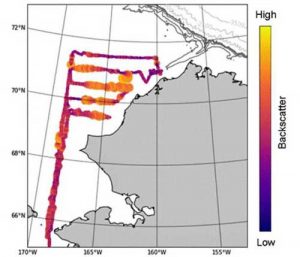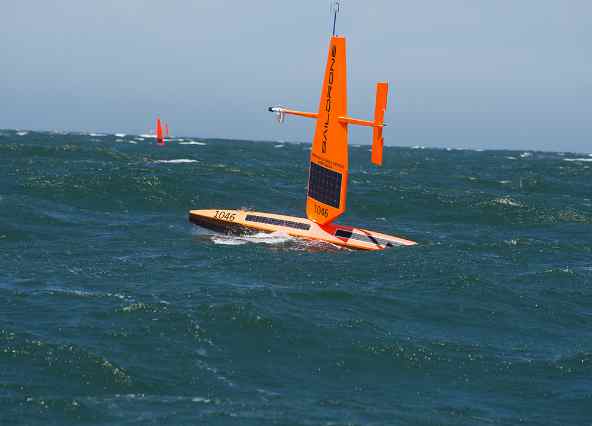
The saildrones are completely autonomous, so they can sail along under their own power as long as there’s a little sun and wind to send them on their way. But aimlessly floating around might not produce the best science, so it’s our job to give them a place to go.
All of our communication to and from the saildrones is done through a website operated by Saildrone, Inc. We can see where the saildrones are, what measurements they are making, and plan the next place to go. The saildrones send back regular updates of the measurements collected by all of the instruments via satellite, which we can view in near real-time. Viewing the data as they are being collected means we can make sure everything is working as expected, adjust our plans based on what we see. We can see what is happening right now in the Arctic, all from our own desks, which is pretty amazing.
The files produced by the echosounder (the acoustic equipment mounted on the saildrone) are too large to transfer via satellite while the saildrones are in the field. We will download the full acoustic dataset when the saildrones are recovered. But, right now we are receiving a near real-time summary of the backscatter (fish acoustic signals or echoes) in the water column. Though not quantitative, the data we receive from each saildrone allows us to monitor and build a map of the backscatter, which in this environment is dominated by echoes from age-0 Arctic cod. The backscatter indicates that a mass is present in the water, which we assume is fish To ground-truth the saildrone data, we plan to send a research vessel to this same area shortly to actually collect some fish.
Source: Alaska Fisheries Science Center








